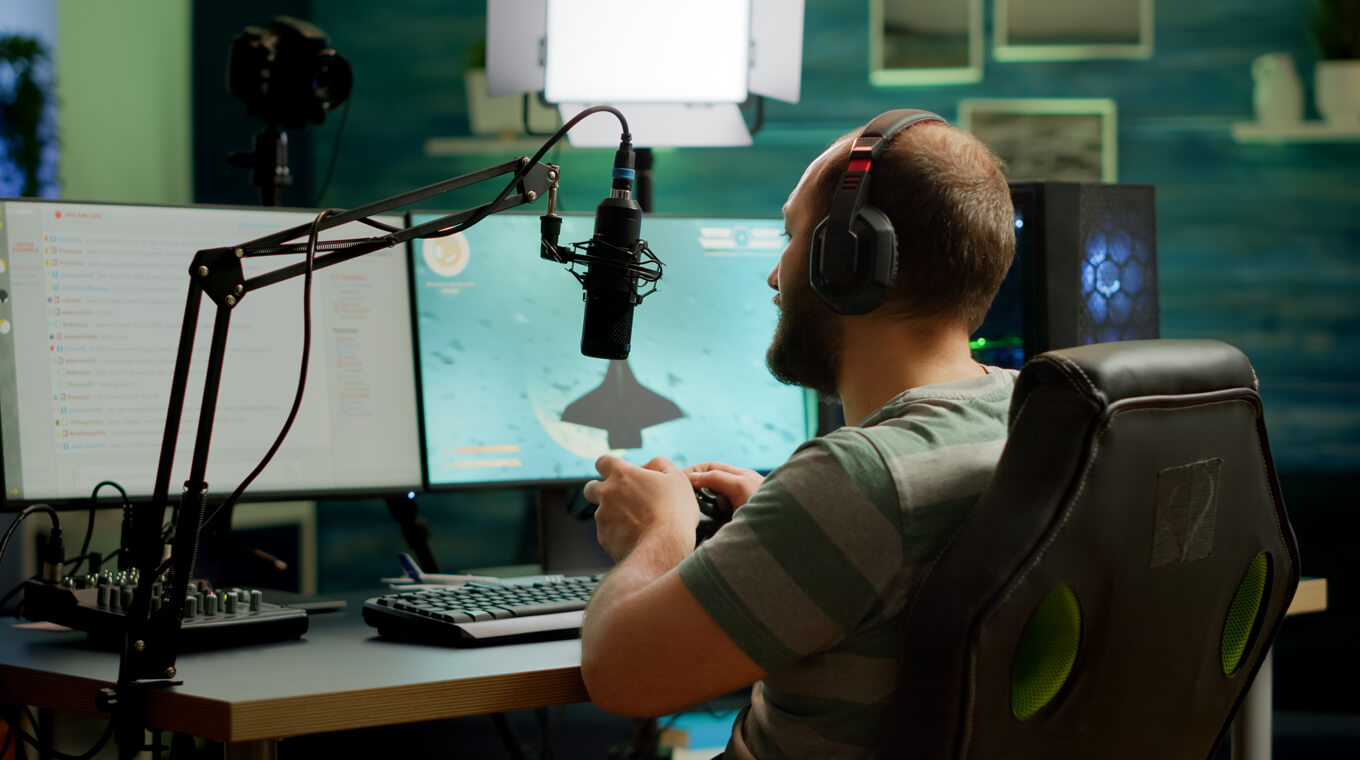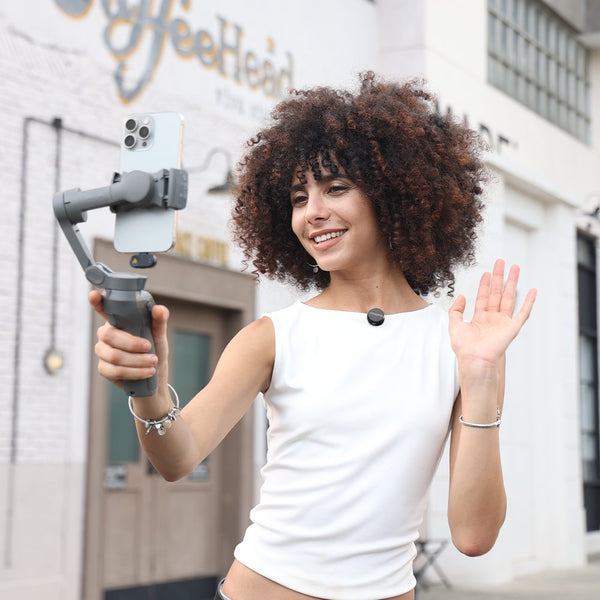Introduction to Microphone Usage Scenarios
Microphones have become an integral part of our lives, whether we realize it or not. From microphone concert setups in concert halls to podcast studios, microphones are used in a wide range of scenarios to capture and amplify sound. In this article, I will take you on a journey to explore the versatility of microphone usage scenarios, and how they play a crucial role in various fields.
Microphone Types and Their Applications
Before diving into the different usage scenarios, it's important to understand the various types of microphones and their applications. There are several types of microphones, including dynamic microphones, condenser microphones, ribbon microphones, and lavalier microphones. Each type has its own unique characteristics and is suitable for specific situations.
Dynamic microphones, for example, are commonly used in live performances and recording studios due to their durability and ability to handle high sound pressure levels. On the other hand, condenser microphones are highly sensitive and ideal for capturing vocals and acoustic instruments in controlled environments such as studios. Lavalier microphones, also known as lapel microphones, are small and discreet, making them popular choices for broadcasting, conferences, and public speaking events.
- Concert Microphone Usage in Concert Halls and Live Performances
Concert halls and live performances are perhaps the most well-known and widely recognized microphone usage scenarios. From small local venues to massive arenas, microphones are essential for amplifying the voices and instruments of performers to ensure that the audience can hear every note and word.
How to Choose the Best Microphone for Concert or Live Performances
In concert halls, a combination of microphones is typically used. Vocalists often use handheld dynamic microphones, while instrumentalists may have their own microphones placed near their instruments. For larger performances, wireless microphones allow performers to move freely on stage without the need for cables.
Microphone for Concert Recommendations:
Shure SM58
The Shure SM58 is a dynamic cardioid microphone renowned for its durability, reliability, and superior sound quality. It features a cardioid pickup pattern, which minimizes background noise and focuses on the sound coming directly from the front, making it ideal for live vocal performances. Its rugged design allows it to withstand the harsh conditions of concert environments, and its frequency response is tailored to enhance vocals, providing a warm and clear sound.
Why it’s great for concerts:
The Shure SM58 is commonly used in concerts due to its feedback rejection, durability, and affordable price, making it a staple for both professionals and beginners. It is excellent for handling high sound pressure levels (SPL), ensuring clear sound even in loud concert settings.
Audio-Technica AT2020
The Audio-Technica AT2020 is a cardioid condenser microphone that offers exceptional clarity and detail. It captures a wider frequency range compared to dynamic microphones, which makes it ideal for capturing nuanced vocals or instruments. While it’s often used in studio settings, it can also be effective in controlled concert environments when paired with the right sound system.
Why it’s great for concerts:
Its high sensitivity and low self-noise make it perfect for capturing crisp and accurate sound, though it is more sensitive than dynamic microphones, meaning it needs careful handling to avoid issues like feedback. The AT2020’s affordability and strong build also make it a solid choice for both studio and live performances.
Challenges of Concert Microphones
-
Feedback:
Feedback occurs when the microphone picks up sound from the speakers, causing a loud, high-pitched screech. It is especially common in high-volume environments like concerts.
How to prevent it: -
Use directional microphones like the SM58, which have a cardioid pickup pattern that focuses on sound from the front.
-
Position speakers away from the microphone to avoid the mic picking up sound from the speakers.
-
Lower speaker volume or adjust the EQ to reduce the frequencies causing feedback.
-
Noise Interference:
Microphones can pick up unwanted environmental noise, such as electrical hums or crowd noise, especially in large concert venues.
How to prevent it: -
Use shielded cables to prevent electrical interference.
-
Place microphones at optimal distances from sources of electrical noise (like stage lighting or amplifiers).
-
Use noise gates or equalizers to reduce unwanted low-frequency noise.
Microphone Placement and Its Impact on Sound Quality
Microphone placement is critical in achieving optimal sound quality at live events. The position and distance from the sound source can greatly affect the clarity and balance of the sound:
-
Proximity to Sound Source:
A microphone placed too far from the sound source (like a singer or instrument) will pick up more ambient noise, while one placed too close can result in distortion or overly boomy sounds. -
Angle and Direction:
Microphones should be positioned to avoid picking up unwanted sounds from the stage or crowd. For instance, cardioid microphones should be directed towards the sound source and away from reflective surfaces or loudspeakers to minimize unwanted noise.
Avoiding Phase Issues:
When using multiple microphones (for different instruments or vocals), careful placement is essential to avoid phase cancellation, where certain frequencies cancel each other out, leading to a hollow or muddy sound
How Concert Microphones Differ from Studio Microphones:
Concert microphones differ from studio microphones in several key aspects, particularly in terms of durability, performance, and the environments in which they are used. Concert microphones are designed to withstand the demanding conditions of live performances, which often involve large venues, high volumes, and challenging acoustics. Unlike studio microphones, which are typically used in controlled, quiet environments, concert microphones must be rugged, with a durable build that can handle frequent handling, movement, and potential impacts. In large venues or outdoor concerts, microphones face specific challenges such as handling feedback, capturing sound from moving performers, and rejecting background noise.
Features that make a Microphone Suitable for a Concert:
-
Noise rejection - helps eliminate unwanted sounds and focus on the performance
-
Clarity - ensures that every note and voice is heard distinctly over the loudspeakers.
-
Durability, is crucial as these microphones must endure physical stress from being on stage, often exposed to varying weather conditions and environmental factors.
A concert microphone designed with these features ensures optimal sound quality and reliability, making it an essential tool for live events.
- Microphone Usage in Recording Studios
Recording studios are where the magic happens. Whether it's a professional studio or a home recording setup, microphones are the primary tool for capturing high-quality audio recordings. In the controlled environment of a studio, condenser microphones are commonly used due to their accuracy and sensitivity.
Different instruments and vocalists require specific microphones to achieve the desired sound. For example, a large-diaphragm condenser microphone is often used to capture the warmth and richness of a singer's voice, while dynamic microphones are suitable for recording electric guitars and drums due to their ability to handle high sound pressure levels.
- Microphone Usage in Podcast Studios

Podcasts have skyrocketed in popularity in recent years, and with good reason. They provide a platform for individuals and experts to share their knowledge, stories, and experiences. In podcast studios, microphones are the essential tool for capturing clear and professional-sounding audio.
Condenser microphones are commonly used in podcast studios, as they can capture the nuances of the human voice. Many podcasters opt for USB microphones due to their ease of use and direct connection to computers. Additionally, lavalier microphones are popular choices for podcast hosts who prefer a hands-free setup.
- Microphone Usage in Broadcasting and Radio
Broadcasting and radio are industries heavily reliant on microphones. Whether it's news anchors delivering the latest updates or radio hosts engaging their listeners, microphones are the bridge between the presenter and the audience.
In broadcasting and radio, microphones with excellent vocal reproduction and noise-canceling capabilities are essential. Dynamic microphones, such as the classic Shure SM7B, are commonly used due to their ability to reject background noise and capture clear vocals. Shotgun microphones are also used in broadcasting to capture audio from a distance, such as in outdoor interviews or sports events.
- Microphone Usage in Conferences and Public Speaking Events
Conferences and public speaking events bring people together to share ideas and knowledge. In these scenarios, microphones ensure that every speaker is heard clearly by the entire audience, regardless of the venue size.
Lavalier microphones, with their small and unobtrusive design, are commonly used in conferences and public speaking events. They can be clipped onto the speaker's clothing or worn around the neck, allowing for freedom of movement while maintaining clear audio transmission. In larger venues, wireless lavalier microphones are often employed to provide mobility for the speakers.
- Microphone Usage in Video Production and Filmmaking
Microphones play a crucial role in video production and filmmaking, capturing high-quality audio to complement the visuals. Whether it's a documentary, a short film, or a YouTube video, the right microphone is essential for capturing dialogue, ambient sound, and other audio elements.
Shotgun microphones are commonly used in video production due to their ability to capture sound from a specific direction while rejecting unwanted noise from the sides and rear. They are often mounted on boom poles and positioned just out of frame, ensuring that the microphone remains close to the actors or subjects while remaining hidden from the camera's view.
- Microphone Usage in Educational Settings
In educational settings, microphones are used to enhance the learning experience for both students and teachers. Whether it's a lecture hall, a classroom, or an online course, microphones ensure that everyone can hear and participate in the educational process.
In lecture halls and classrooms, wireless handheld microphones or voice amplifiers are often used by teachers to amplify their voices. This ensures that students at the back of the room can hear clearly, even in large auditoriums. In online courses and webinars, USB microphones are popular choices for instructors, as they provide clear audio and are easy to set up.
- Microphone Usage in Gaming and Streaming

With the rise of gaming and live streaming platforms, microphones have become essential tools for gamers and streamers to communicate with their audience. Whether it's providing commentary during gameplay or engaging with viewers in real-time, a high-quality gaming microphone is crucial for clear and immersive communication.
USB microphones are commonly used by gamers and streamers due to their plug-and-play functionality and ease of use. These microphones offer excellent sound quality and are compatible with gaming consoles, computers, and streaming platforms. Additionally, headset microphones are popular choices for gamers who want an all-in-one solution for both audio input and output.
- Microphone Usage in Voice-Over Work
Voice-over work is a specialized field that requires precise and professional audio recordings. From commercials and animations to audiobooks and video games, microphones are the primary tool for capturing the voice talent's performance.
Condenser microphones with a neutral frequency response are commonly used in voice-over work, as they accurately capture the nuances of the voice. Microphones with a cardioid polar pattern are preferred, as they reject unwanted sound from the sides and rear, ensuring a clean recording. In professional voice-over studios, acoustically treated rooms and high-end microphones further enhance the quality of the recordings.
Choosing the Right Microphone for Different Scenarios
With a plethora of microphone options available, choosing the right microphone for each scenario can be overwhelming. It's important to consider factors such as the environment, the sound source, and the desired sound quality.
In live performance scenarios, dynamic microphones are often the go-to choice due to their durability and ability to handle high sound pressure levels. In controlled environments such as studios, condenser microphones offer exceptional accuracy and sensitivity. For hands-free setups, lavalier microphones provide convenience and mobility.
Tips for Optimizing Microphone Performance in Various Settings
To ensure optimal microphone performance in different settings, there are a few tips and techniques you can employ. Firstly, proper microphone placement is crucial. Experiment with microphone positioning to find the sweet spot that captures the desired sound while minimizing unwanted noise.
Secondly, consider the acoustics of the environment. In untreated rooms with excessive reflections, the sound quality can suffer. Adding acoustic treatment, such as foam panels or bass traps, can greatly improve the clarity of the recordings.
Lastly, always test and monitor the audio levels to avoid distortion or clipping. Proper gain staging and monitoring ensure that the microphone is capturing the desired sound without any unwanted artifacts.
Conclusion
Microphones are versatile tools that play a crucial role in a wide range of scenarios. From concert microphones in concert halls to podcast studios, microphones capture and amplify sound, ensuring that every word and note is heard. By understanding the different microphone types, their applications, and optimizing their performance, we can unlock the true potential of these remarkable devices. So, whether you're a performer, a content creator, or a public speaker, embrace the power of microphones and let your voice be heard.
CTA: Explore maono microphones for your specific needs and take your sound to the next level.
Also read this related article: Cardioid Mic vs Condenser: Key Differences, Best Uses, and FAQs



